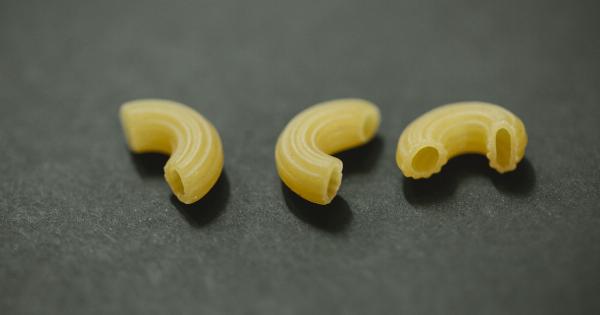Type 2 diabetes is a chronic condition that affects millions of people worldwide. It is characterized by high blood sugar levels due to the body’s inability to use insulin effectively.
The good news is that there are several dietary changes that you can make to help manage your type 2 diabetes. These changes are easy to implement and can make a significant difference. In this article, we will cover ten easy dietary changes for more effective type 2 diabetes management.
1. Monitor your carbohydrate intake
Carbohydrates can significantly affect blood sugar levels, so it is essential to monitor your carbohydrate intake. You should aim to eat a balanced diet that includes whole grains, vegetables, fruits, and lean protein.
However, you should avoid eating too many carbohydrates in one meal or snack, as this can cause a spike in your blood sugar levels. Spread your carbohydrate intake throughout the day to help keep your blood sugar stable.
2. Increase your fiber intake
Fiber is an essential nutrient for people with type 2 diabetes as it can help regulate blood sugar levels. Foods like beans, vegetables, and fruits are excellent sources of fiber and low in glycemic index.
A diet rich in fiber is also beneficial for reducing the risk of heart disease and stabilizing insulin levels. Aim to consume at least 25-30 grams of fiber per day.
3. Reduce your sodium intake
Excess sodium can increase blood pressure, which can lead to heart disease and other complications. People with type 2 diabetes are at a higher risk of heart disease.
Therefore, it is essential to monitor your sodium intake and reduce it wherever possible. Avoid adding salt to your food and opt for low-sodium options when shopping for groceries.
4. Choose healthy fats
Unlike saturated and trans fats, healthy fats like monounsaturated and polyunsaturated fats are beneficial for people with type 2 diabetes. They can help lower bad cholesterol levels, reduce inflammation, and improve insulin sensitivity.
Excellent sources of healthy fats include olive oil, avocadoes, nuts, and fatty fish like salmon.
5. Avoid sugary drinks
Soda, juice, and other sweetened drinks are loaded with sugar and can cause a spike in blood sugar levels. Therefore, it is crucial to avoid sugary drinks and opt for water, unsweetened tea, or sugar-free alternatives instead.
Always read the labels before purchasing any drink to ensure it does not contain added sugar or high-fructose corn syrup.
6. Focus on portion control
Portion control is an often-overlooked aspect of managing type 2 diabetes. People often overeat, which leads to high blood sugar levels and weight gain.
Therefore, it is essential to measure your portions and try to limit your intake of high-calorie foods. A good tip is to use smaller plates and bowls to reduce the amount of food you eat.
7. Get enough protein
Protein is an essential nutrient that provides energy, maintains muscle mass, and helps regulate blood sugar levels. Therefore, people with type 2 diabetes should aim to consume enough protein in their diet.
Excellent sources of protein include lean meats, fish, poultry, beans, and tofu.
8. Drink plenty of water
Drinking enough water can help regulate blood sugar levels, improve kidney function, and flush out excess sodium in the body. People with type 2 diabetes should aim to drink at least eight glasses of water per day.
If you have trouble drinking enough water, try adding flavorings or drinking herbal teas to stay hydrated.
9. Try meal planning
Meal planning involves prepping and cooking meals in advance to save time and ensure a balanced diet.
People with type 2 diabetes can benefit greatly from meal planning as it allows them to control their portions, choose healthy foods, and avoid eating out or relying on fast food. There are many meal planning tools and apps available online to help get you started.
10. Seek guidance from a professional
If you are struggling to manage your type 2 diabetes, seek guidance from a healthcare professional. A registered dietitian or other healthcare providers can provide you with individualized advice and help you create a plan that works for you.
Conclusion
Making dietary changes can significantly improve the management of type 2 diabetes. However, it is essential to implement these changes alongside regular exercise, monitoring blood sugar levels, and seeking guidance from a healthcare professional.
By monitoring your carbohydrate intake, increasing fiber consumption, reducing sodium intake, choosing healthy fats, avoiding sugary drinks, focusing on portion control, getting enough protein, drinking plenty of water, trying meal planning, and seeking guidance from a professional, you can effectively manage your type 2 diabetes and improve your overall health.





























